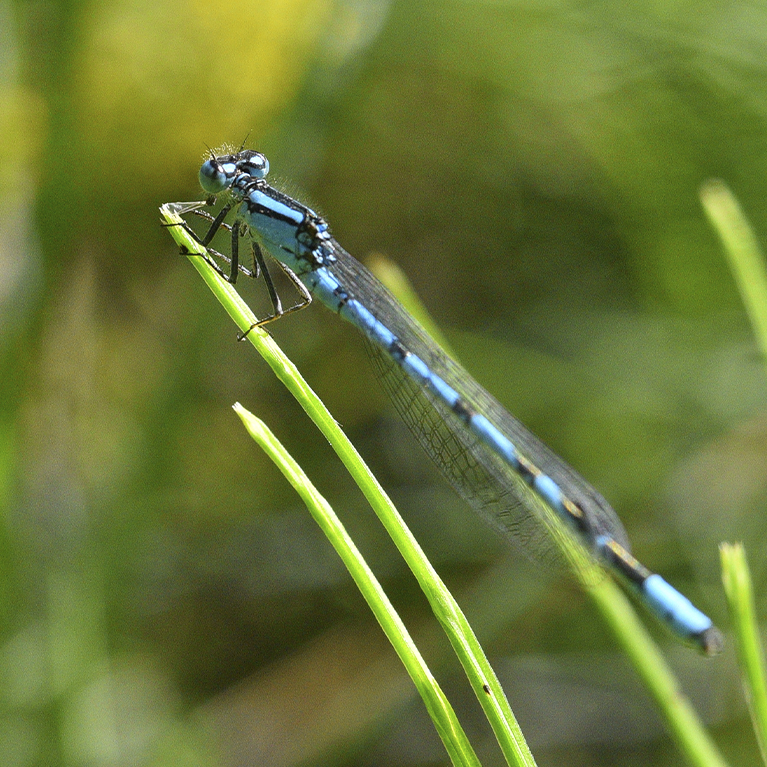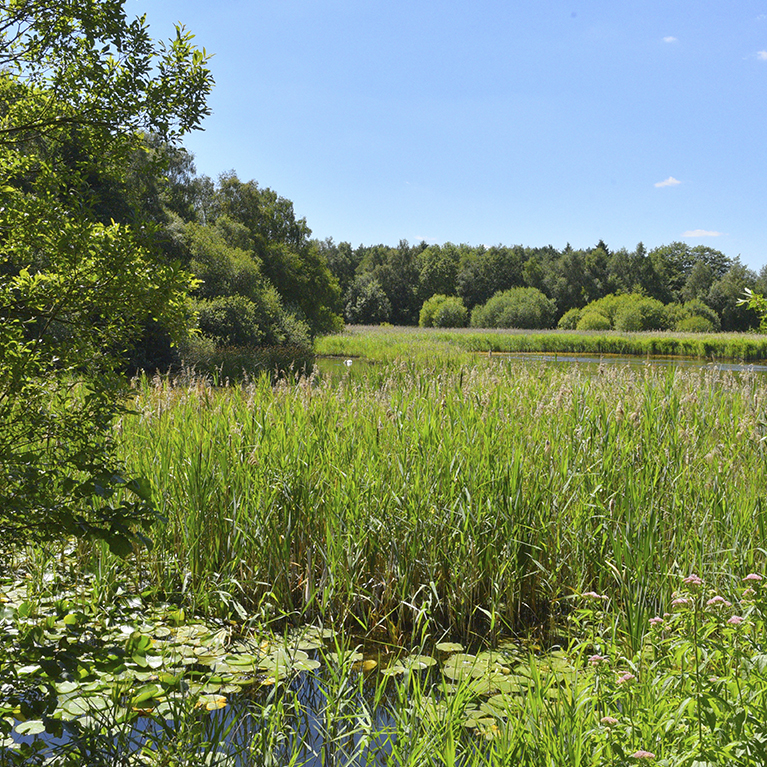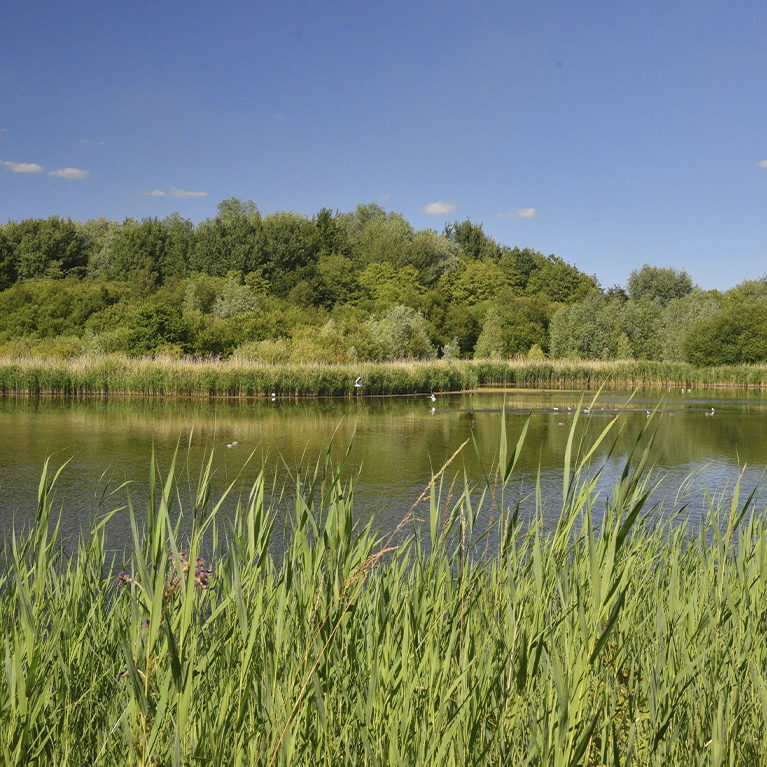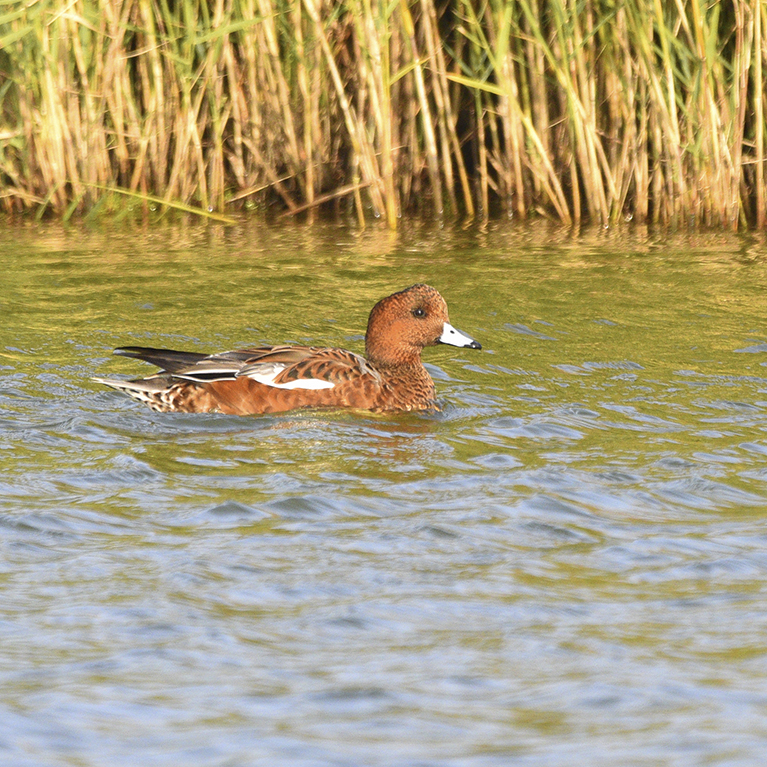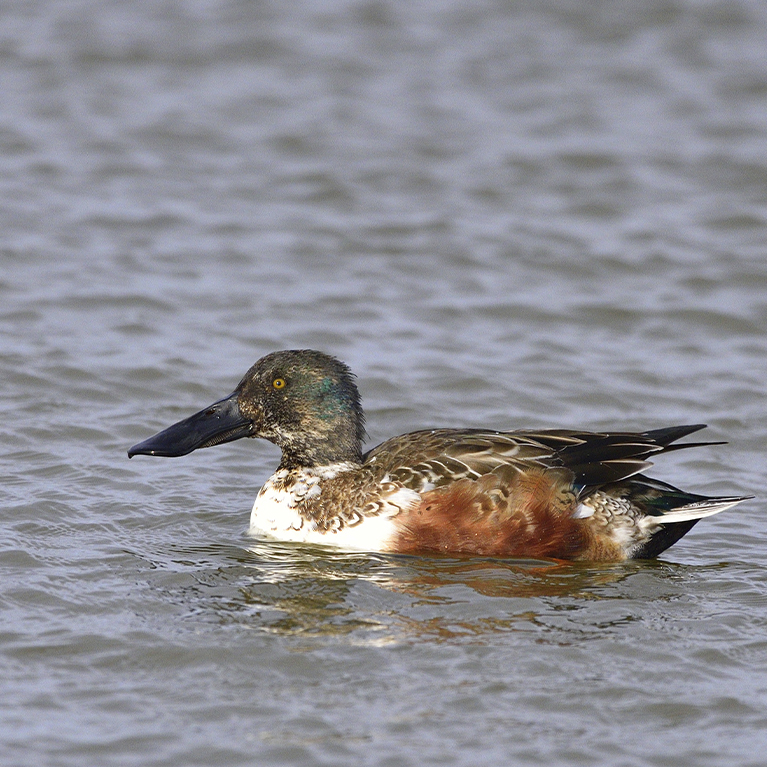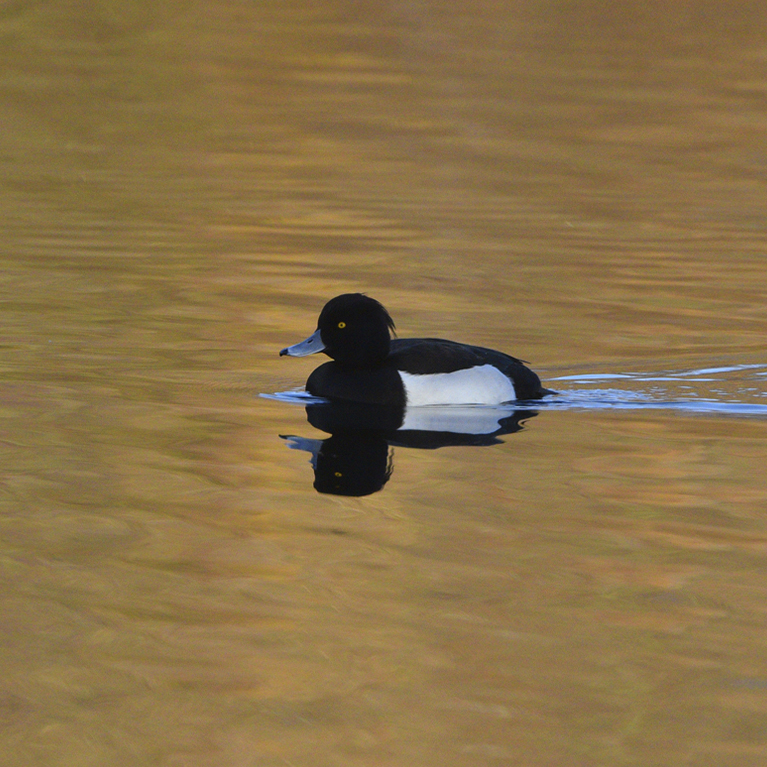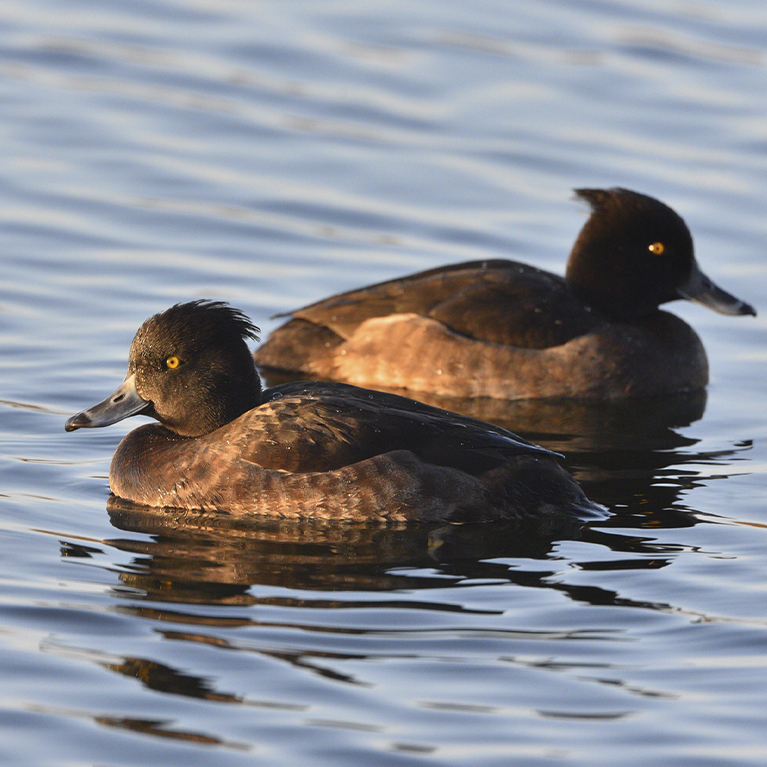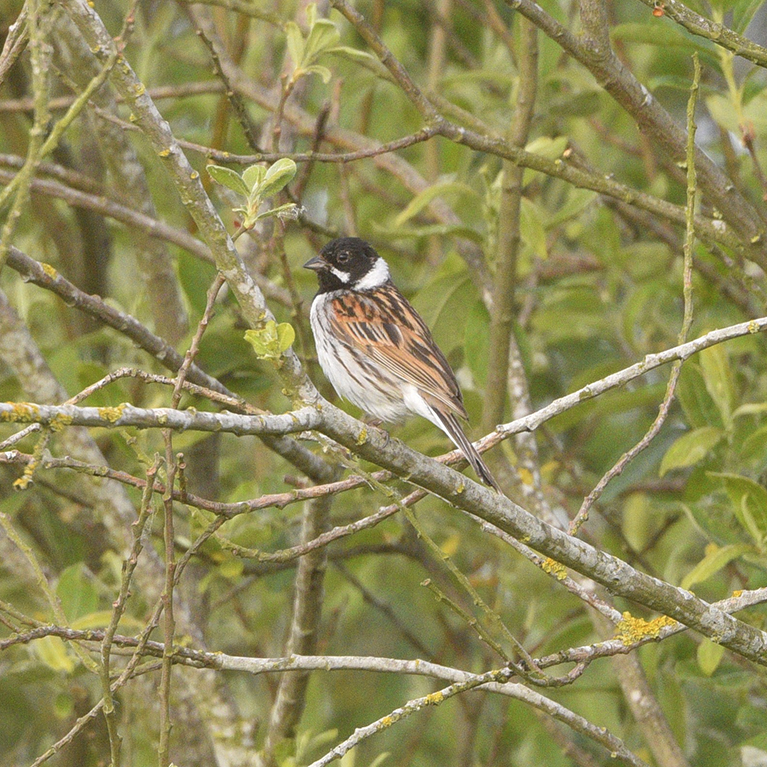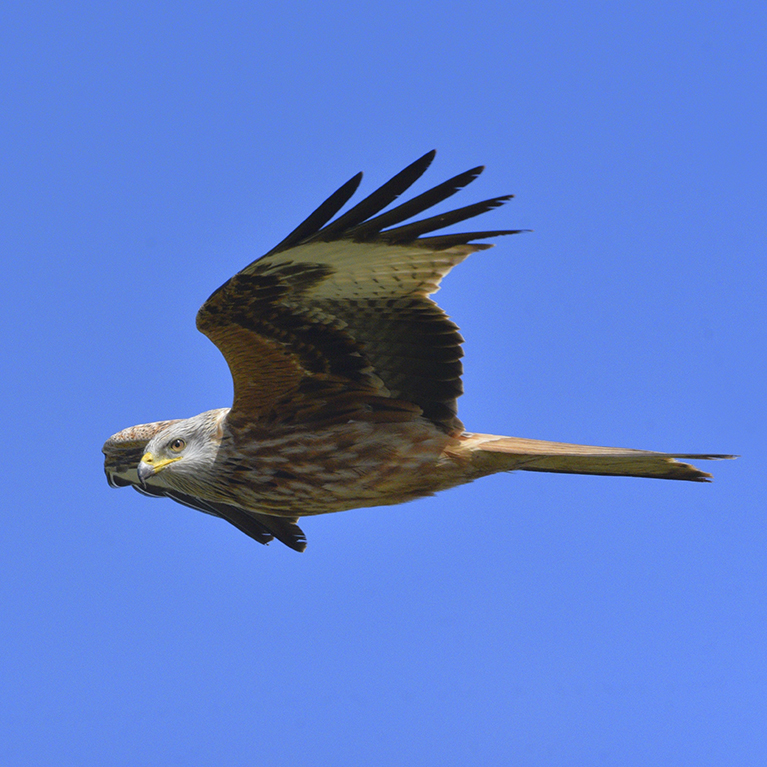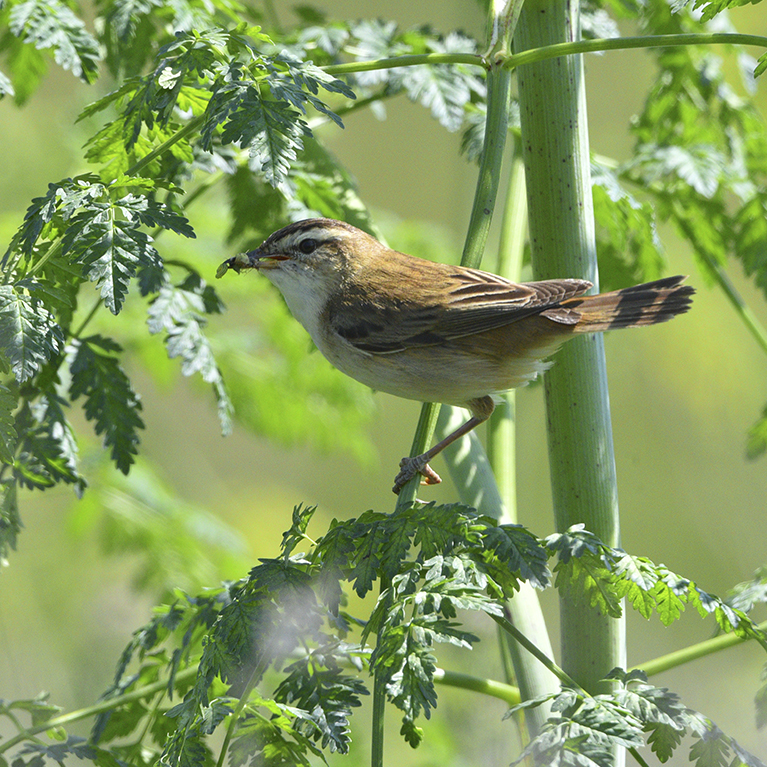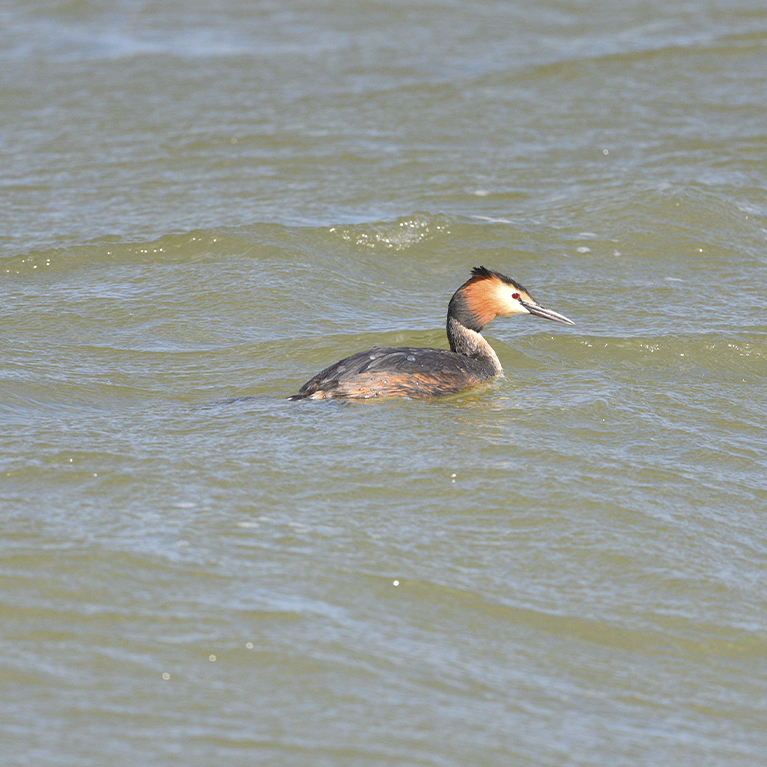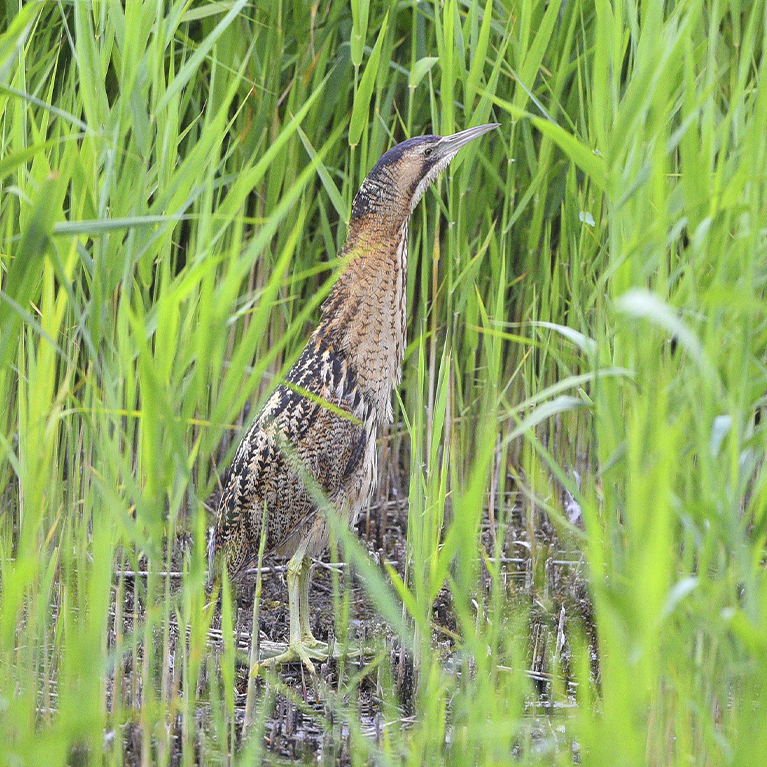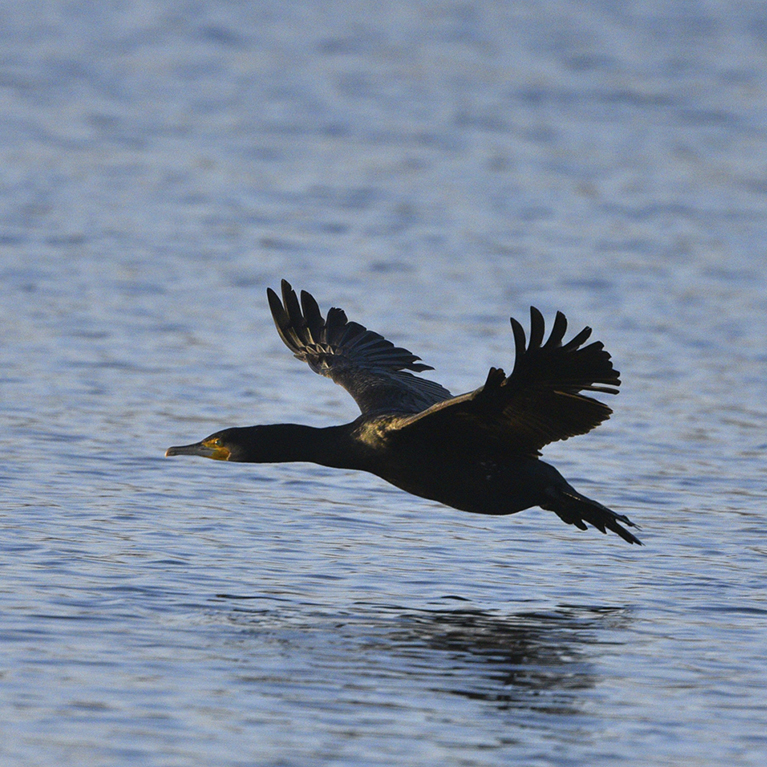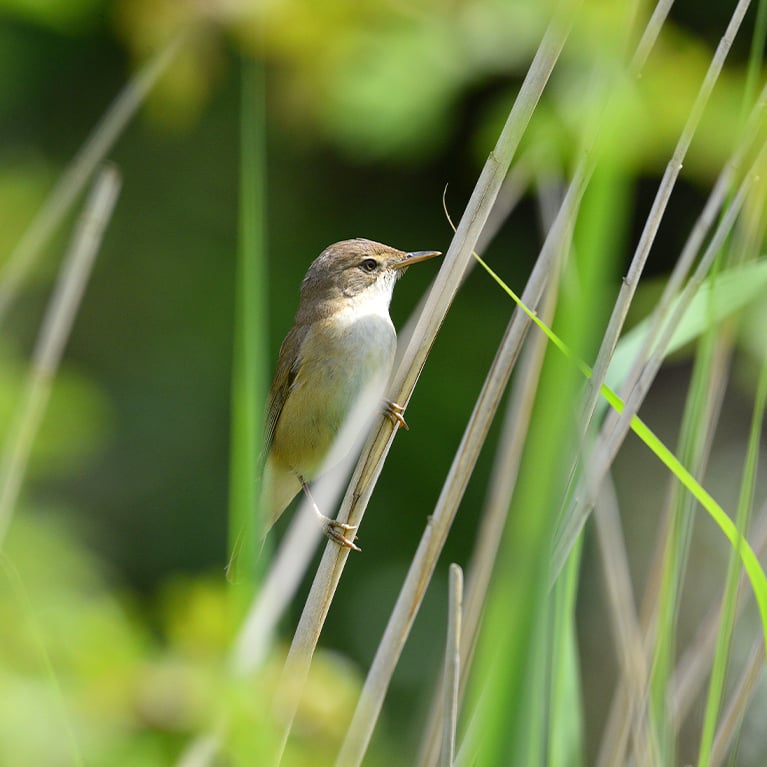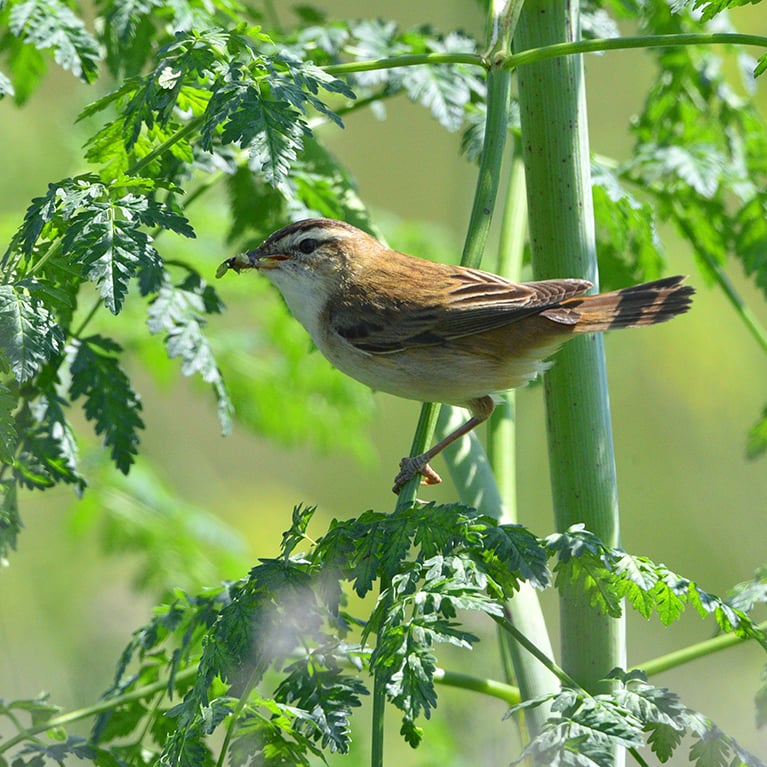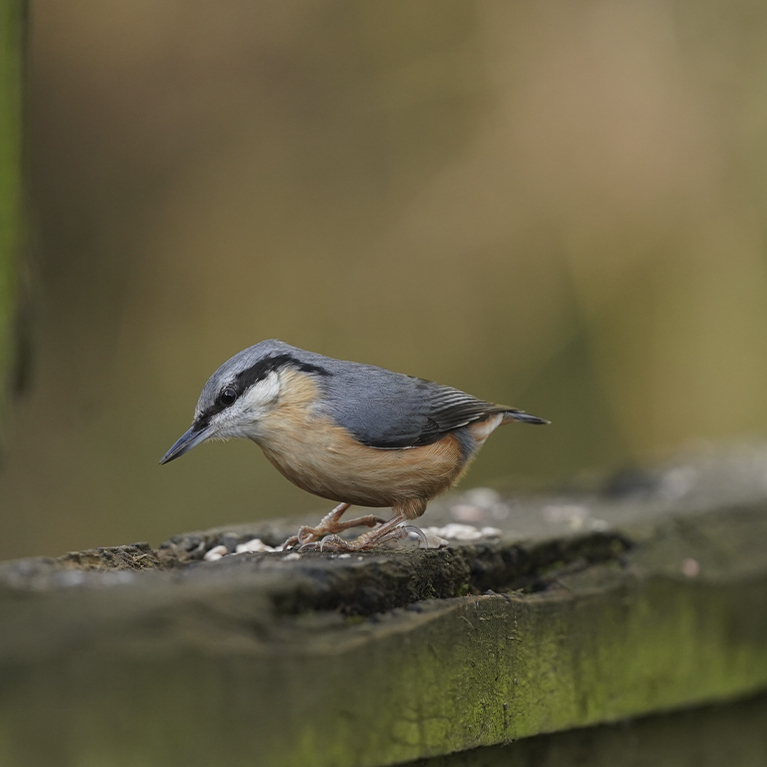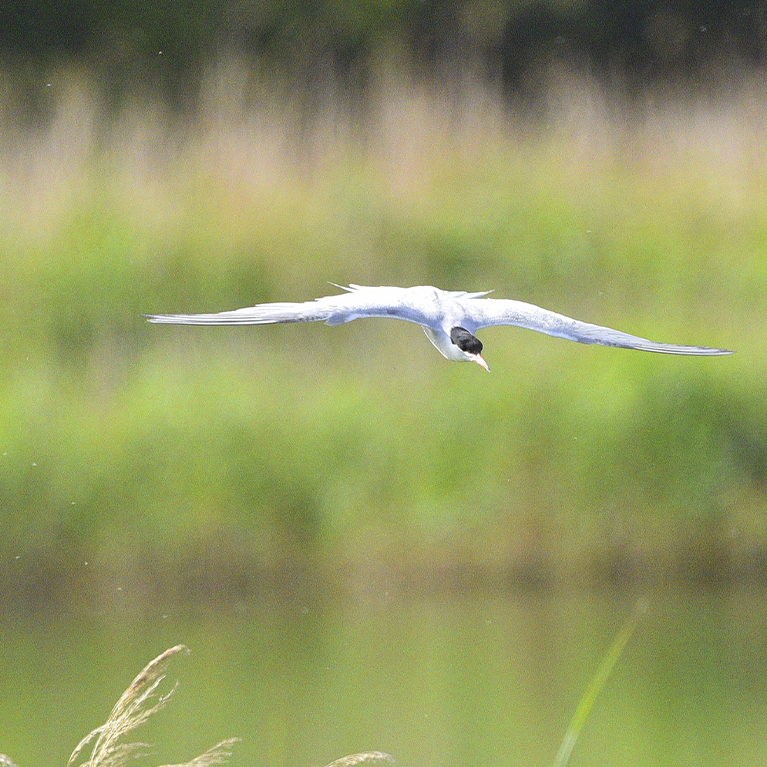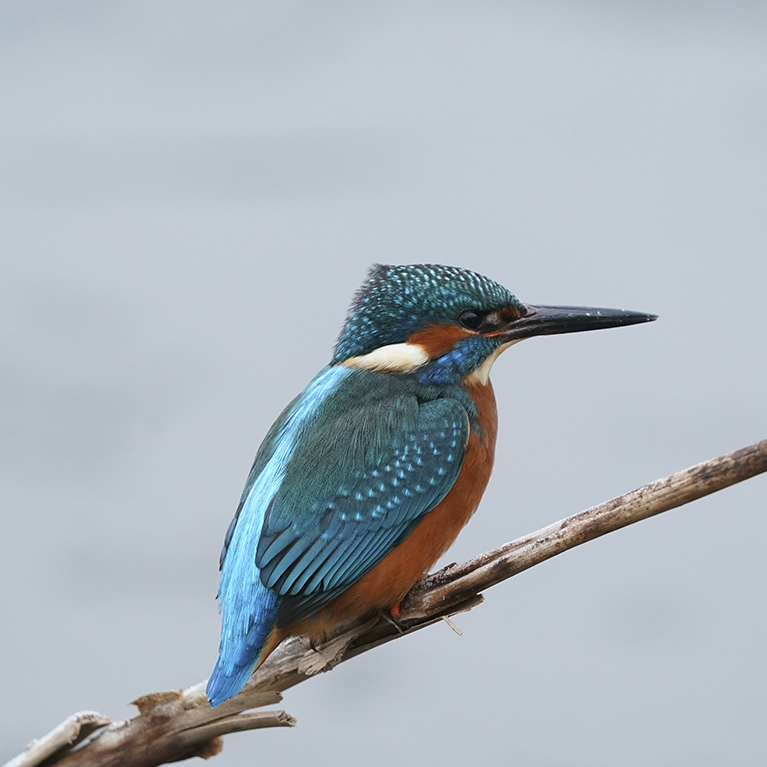
The reserve has been created by the excavation of sand, which has left a series of lagoons. There is a small area of heath along with woodland, grassland and marsh. Nearly 200 species of bird have been recorded which is a reflection of the varied habitats.
what species and habitats can you find?
Reed warbler, sedge warbler, Cetti's warbler and reed bunting can be found in the reeds and bittern is now a regular visitor. Winter wildfowl includes wigeon, shoveler, common pochard, teal and gadwall and scarcer duck might include a goosander or pintail.
In the summer the lakes hold breeding black headed gull and common tern and avocet are regularly seen. Hobby has established itself in the area and can often be seen catching dragonflies over the lakes. In 2001, the site made birdwatching headlines when an extremely rare green heron was found.
Autumn & Winter species
wigeon, shoveler, tufted duck, reed bunting, fieldfare, red kite, water rail, bittern, great crested grebe, cormorant.
Spring & Summer species
hobby, marsh harrier, gadwall, reed warbler, sedge warbler, nuthatch, common tern, kingfisher.
useful tip
Best time to visit is between April and August. During winter woodland can become boggy under foot.
facilities
There are no surfaced paths but a regularly mown circular route around the reserve that includes two bird hides.
The reserve is ten minutes drive from Scunthorpe where a wide range of facilities are available.
getting here
The reserve can be found close to the village of Messingham, south of Scunthorpe. Access is to the east of the B1400 opposite Scallow Grove Farm. Access is through a gate and a track leads down to a small car park.
Nearest postcode DN17 3RD
OS Map Reference SE 908 032
access
Please note, only assistance dogs are allowed on the reserve.
opening times
Open year-round.
reserve & Observatories
Messingham Sand Quarry Nature Reserve
The reserve has been created by the excavation of sand, which has left a series of lagoons. There is a small area of heath supporting heather, petty whin and other heathland flora. Woodland, grassland and marsh add varied habitats and support a vast array of flora including seven orchid species.
explore the other locations along the western Lincolnshire birding trail
places to stay nearby
Longwool Lookout at the Rookery Rural Retreats
Louth Livestock Market Motorhome Stopover
Sycamore and Stars Off Grid Retreat
The Stables at the Rookery Rural Retreats
Elmhirst Lakes Luxury Fishing Retreat
Greetham Retreat CL Touring Site
Hampton by Hilton Humberside Airport
Katie’s Corner at Greetham Retreat
Laura’s Loft at Greetham Retreat
Maggie’s Mews at Greetham Retreat
Rose’s Rest at Greetham Retreat
San Pietro Restaurant with Rooms
Sawcliffe Manor Country House & Cottages
The Half Moon Hotel and Restaurant
The QHotels Collection Forest Pines Golf & Spa Resort
Wendy’s Wing at Greetham Retreat
Holme Lea Caravan & Camping Site (inc. Green Gables Luxury Wagon)
Otby House Farm Caravan and Camping Site
things to do in the area
Humber to The Wash Cycle Route
Cleethorpes Coast Light Railway
Forest Pines Hotel, Spa & Golf Resort by The QHotels Collection
Grimsby Fishing Heritage Centre
Horncastle Pool & Fitness Suite
Laceby Manor Resort Restaurants
Laceby Manor Spa & Golf Resort
Lincolnshire Llama Cleethorpes
Longwool Lookout at the Rookery Rural Retreats
Louth Livestock Market Motorhome Stopover
Medieval Maze and Victorian Splendour Cycle Route
Meridian Leisure Centre, Louth
Play Avenue – Role Play Centre
Pretty Little Acorns Jewellery
Sycamore and Stars Off Grid Retreat
The Cheese Shed @ Cote Hill Farm
The Stables at the Rookery Rural Retreats
Alfred Enderby Traditional Fish Smokers
Back 2 Bear Outdoor Activities
Bain Valley, Belmont Mast, Biscathorpe Lake Birdwatching
Covenham Reservoir Birdwatching
Elmhirst Lakes Luxury Fishing Retreat
Far Ings National Nature Reserve Birdwatching
Greetham Retreat CL Touring Site
Hampton by Hilton Humberside Airport
Katie’s Corner at Greetham Retreat
Laura’s Loft at Greetham Retreat
Lincoln & Witham Landscape Recovery
Lincolnshire Coastal Country Park Birdwatching
Maggie’s Mews at Greetham Retreat
Messingham Sand Quarry Nature Reserve
Red Hill & Stenigot Birdwatching
Rose’s Rest at Greetham Retreat
San Pietro Restaurant with Rooms
Sawcliffe Manor Country House & Cottages
South Ormsby Estate Birdwatching
South Ormsby Estate’s Lincoln Red Beef
The Blacksmith’s Arms Rothwell
The Half Moon Hotel and Restaurant
The QHotels Collection Forest Pines Golf & Spa Resort
The Ship Inn, Barnoldby-le-Beck
Wendy’s Wing at Greetham Retreat
Willingham Forest & Linwood Warren Birdwatching
‘Tails’ of the Riverbank Cycle Route
Caistor Arts and Heritage Centre
Grimsby Revolution Cycle Route
Holme Lea Caravan & Camping Site (inc. Green Gables Luxury Wagon)
In Search of the Lost Don Cycle Route
Iron and Agriculture Cycle Route
Lincolnshire Wolds Cycle Route
Mysteries of the Marshes Cycle Route
Otby House Farm Caravan and Camping Site
Sandhills and Windmills Cycle Route
The Ranch Steakhouse and Grill
The Royal Oak Inn ‘The Splash’
